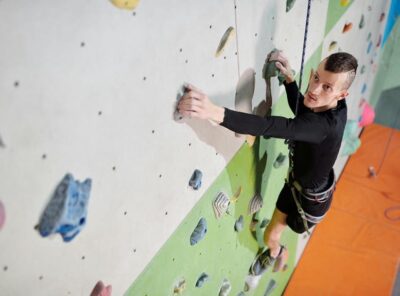Why Does Vertical Leap Matter for Dunking Height?
Improving your vertical leap is crucial for achieving impressive dunking heights. Your ability to jump higher is directly linked to how high you can dunk, as a stronger vertical leap provides the lift necessary for those jaw-dropping slams.
Strengthening your leg muscles through exercises like squats and lunges, incorporating plyometric drills, and focusing on proper jumping techniques all contribute to enhancing your dunking potential.
Mastering the biomechanics of your jump, increasing muscle power, and fine-tuning your neuromuscular coordination are key factors in achieving maximum dunking height. Elevate your dunking game by harnessing the power of your vertical leap.
Key Takeaways
- Strong vertical leap determines how high you can reach for dunking.
- Enhancing jump height requires strength training and muscle power.
- Proper jumping technique and form influence dunking efficiency.
- Plyometric drills improve explosive power crucial for higher jumps.
- Biomechanics and muscle strength play key roles in achieving impressive dunking heights.
Importance of Vertical Leap in Dunking
Having a strong vertical leap is vital for successfully dunking a basketball. Your vertical jump determines how high you can reach, making it important for getting the ball over the rim.
To enhance your vertical leap, consider incorporating strength training into your routine. Strengthening your leg muscles through exercises like squats and lunges can greatly impact your ability to jump higher.
By focusing on improving your vertical jump, you can increase your dunking potential and effectiveness on the basketball court. Remember, a higher vertical leap gives you the elevation needed to perform impressive dunks.
Factors Affecting Dunking Height
To maximize your dunking height, understanding the key factors that influence it’s crucial. When aiming to increase your vertical leap for those jaw-dropping dunks, consider these critical elements:
- Muscle Power: Strengthening your leg muscles through targeted exercises like squats and lunges can greatly boost your vertical jump.
- Explosiveness: Incorporating plyometric drills into your workout routine enhances your ability to generate quick and powerful movements essential for explosive jumps.
- Proper Jumping Technique: Mastering the correct form, including a strong takeoff, arm swing, and knee tuck, ensures top efficiency and height in each jump.
Science Behind Vertical Leap
Understanding the scientific principles that govern vertical leap is essential for revealing your full potential in achieving higher dunking heights.
The science behind jumping lies in the intricate coordination of muscle strength, power, and biomechanics. When you jump, your muscles rapidly contract, generating explosive power that propels your body upwards.
This power production is influenced by factors like neuromuscular coordination, flexibility, and mobility.
By improving these aspects, you can enhance your vertical leap performance for achieving greater dunking heights.
Here is a table summarizing the key elements of the science behind vertical leap:
| Key Elements | Description | Impact |
|---|---|---|
| Muscle Strength | Ability of muscles to generate force for a powerful jump. | Directly influences jump height. |
| Biomechanics | Study of body movements and mechanics during a jump. | Affects efficiency of jump motion. |
| Power Generation | Rapid muscle contractions producing explosive force for vertical movement. | Vital for achieving higher jumps. |
Training Techniques for Vertical Leap
Exploring efficient training techniques for vertical leap height can greatly enhance your dunking performance.
To enhance your jumping, consider incorporating the following strategies into your training routine:
- Strength Training: Focus on lower body muscles such as quads, glutes, and calves to build the power needed for explosive jumps.
- Jump-Specific Drills: Include exercises like jump squats, single-leg hops, and bounding drills to target the muscles essential for maximizing jump height.
- Utilize Resistance Bands: Incorporating resistance bands into your jump training can help improve muscle strength and power, translating to higher vertical leap heights.
Plyometrics for Dunking Height
Enhancing your dunking height through plyometric training involves optimizing explosive power and muscle force generation.
To jump high for those epic dunks, plyometrics like box jumps are key. These exercises focus on quick, powerful movements to activate your fast-twitch muscle fibers.
By improving the stretch-shortening cycle, plyometric drills enhance your ability to generate rapid force, essential for propelling yourself up to slam that ball through the hoop.
Engaging in these activities can greatly boost your rate of force development, vital for achieving those jaw-dropping vertical leaps.
Through proper execution of plyometric training, your neuromuscular coordination gets fine-tuned, paving the way for increased dunking height.
Get ready to soar to new heights with these explosive exercises!
| Plyometric Exercise | Benefits | Recommended Reps |
|---|---|---|
| Box Jumps | Explosive Power, Fast-Twitch Muscle Activation | 3 sets of 10 reps |
| Depth Jumps | Improved Rate of Force Development | 3 sets of 8 reps |
| Tuck Jumps | Enhances Stretch-Shortening Cycle | 4 sets of 12 reps |
Strength Training for Dunking
Have you thought about integrating strength training to enhance your dunking abilities and increase your vertical leap?
To boost your jump height and lower body strength for successful dunks, here are some key strategies to contemplate:
- Engage in exercises targeting fast-twitch muscle fibers to enhance explosive strength.
- Include plyometric training to develop rapid muscle contractions crucial for explosive jumps.
- Utilize strength shoes in your training regimen to specifically target the lower body muscles needed for achieving the vertical leap required for dunking.
Role of Biomechanics in Dunking
Understanding the biomechanics involved in dunking is essential for maximizing your jump efficiency and power generation. When aiming to jump high enough for a dunk, proper joint sequencing, and coordination play an important role.
The stretch-shortening cycle, which involves quickly stretching your muscles before rapidly shortening them, enhances the elastic energy needed for high jumps. Key biomechanical factors such as take-off angle and arm swing have a substantial impact on the force production required for dunking.
By mastering these principles, you can improve your dunking performance by optimizing your jump efficiency and power generation.
Utilize your arm swing effectively and make sure your take-off angle is ideal to generate the vertical force necessary to reach the height needed for a successful dunk.
| Biomechanical Factors | Impact on Dunking |
|---|---|
| Joint Sequencing | Essential for coordination |
| Stretch-shortening Cycle | Enhances energy storage |
| Take-off Angle | Affects force production |
| Arm Swing | Influences jump efficiency |
| Mastery of Principles | Improves dunking performance |
Physiology of Jumping Higher
To jump higher and improve your dunking performance, mastering the physiological aspects of explosive power and force generation is essential. Here are key factors to boost your vertical leap:
- Fast-twitch muscle fibers: These fibers are critical for generating the rapid and powerful contractions needed to propel you to greater heights.
- Proper joint sequencing: By coordinating the sequence in which your joints extend during a jump, you can maximize the force applied to the ground, allowing you to spring up higher.
- Stretch-shortening cycle: Utilizing the elastic energy stored in your muscles during the eccentric (lengthening) phase of movement can greatly enhance your jump performance, helping you reach new heights with less effort.
Understanding and optimizing these physiological mechanisms will make jumping much harder for you to resist.
Achieving Maximum Dunking Potential
To maximize your dunking potential, focus on enhancing your vertical leap through targeted training techniques and exercises.
By improving your muscle power, explosive strength, and biomechanical efficiency, you can achieve really good dunking height. Incorporate plyometrics, strength training, and jump-specific exercises into your routine to boost your vertical leap effectively.
A strong core, lower body strength, and efficient force transfer are key components in maximizing your vertical leap for top-tier dunking ability.
Additionally, utilizing a running start can further enhance your jump height and overall dunking performance.
Remember, consistent practice and dedication to these training methods will lead to significant gains in your ability to throw down those powerful dunks.
| Training Techniques | Benefits |
|---|---|
| Plyometrics | Enhances explosive power |
| Strength Training | Builds muscle strength |
| Jump-Specific Exercises | Improves vertical leap |
| Core Strengthening | Enhances stability |
| Force Transfer | Optimizes energy transfer |
Frequently Asked Questions
Does Vertical Affect Dunks?
Your vertical leap greatly impacts your ability to execute dunks. A higher vertical allows you to jump closer to the rim, making dunking easier. Enhance your vertical leap through training to increase your dunking potential and elevate your game.
How High Does Your Vertical Need to Be to Dunk?
You gotta soar like an eagle to throw down those jams! Your vertical leap needs to be at least 28 inches for men and 24 inches for women to start feeling the dunking thrill.
Why Can I Jump High but Can’t Dunk?
If you can jump high but struggle to dunk, refining skills like ball control, hand size, and jumping mechanics could be essential. Dunking demands more than just elevation. Focus on honing those specifics to elevate your dunking game.
Can 5 Foot 7 Dunk?
You can dunk at 5 foot 7 with exceptional vertical leap and training. It requires significant lower body power and jump ability. With dedication and targeted exercises, you can work towards achieving the dunking height you desire.
Conclusion
To sum up, mastering your vertical leap is essential for achieving maximum dunking height.
By grasping the science behind vertical leap, implementing proper training techniques such as plyometrics and strength training, and considering the role of biomechanics and physiology, you can unleash your full dunking potential.
So, next time you hit the court, remember that your vertical leap can make all the difference between an average dunk and a jaw-dropping slam dunk that leaves everyone in awe.











